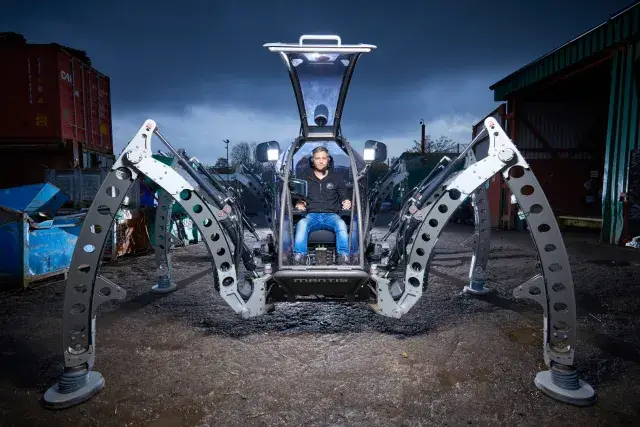Fans of Star Wars, Harry Potter, and the Disney+ series Andor may already be familiar with UK creator Matt Denton’s movie magic, whether they recognize it or not. But in 2012, Mantis, a six-legged, two-ton, human-piloted steel behemoth, made its premiere, taking Denton’s futuristic inventions out of the movie theatre and into the real world.
Matt Denton, an animator, got the Guinness World Record for “Largest Rideable Hexapod Robot.” He was one of those in charge of creating and managing the Star Wars robot BB-8. Denton received this award for his incredible “Mantis,” a sizable robotic walking device that travels slowly like a spider.
How is Mantis’s function controlled?
A firm saw the smaller hexapods Denton was building in the 2000s and asked for a 400-ton version to explore the seabeds below. The hexapods were initially commissioned for commercial use. Denton got money to test this technology at 2 tonnes with Mantis because of its size.

Mantis can be controlled by Wi-Fi or using the 28 buttons and two three-axis joysticks in the cockpit. Its top speed is 1 km/h; despite its weight, it applies the same pressure under each footpad as a human foot would.
Matt Denton’s Biggest Experiment
Denton worked alone for the first eight months of the construction of Mantis, which took more than three years to complete.
Denton recalls, “It was a struggle for me mentally every day.” I had never worked with hydraulics that big before, much less one driven by a diesel engine and simultaneously controlled 18 actuators. It is especially difficult at each leg joint since Denton used two bearings driven by a linear ram that pivot each joint.
The scientists later discovered rotary actuators that may have combined Mantis’ legs into a single, sturdy structure. Even throughout those three years, I discovered better ways to perform the mechanics since I was learning on the job. Denton quipped that it was “kind of a Frankenstein thing.” “It runs Linux on a 486 CPU clocked at one gigahertz.” As a result of this amazing engineering achievement, Denton was awarded the 2017 Guinness World Record for “Largest Rideable Hexapod Robot.”
Denton has recently been researching the possibility of creating enormous 3D-printed replicas of vintage Lego cars using the processing power of Arduinos and the capabilities of 3D printing. In Denton’s words, these “have changed everything,” and he hasn’t ruled out using his new abilities to take on hexapods in the future. Check out his most recent YouTube constructions.
Denton started his journey toward the Mantis in 2009 by creating little hexapods. He constructed more than 20 different spiders while experimenting with various materials.
One helped with the animation of a six-legged turtle in a Harry Potter movie. The development of the mantis’ ultimate form took more than three years, and there were setbacks along the way.
An earlier model’s attempt to stand before the hydraulics failed caused it to fall. Already in development by Denton is a larger Matis model that he hopes will be submersible.





